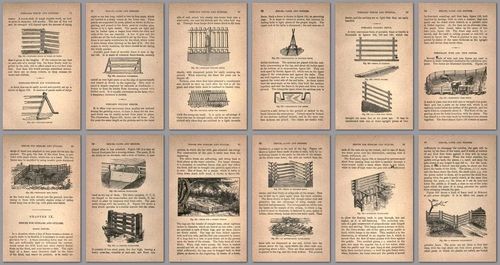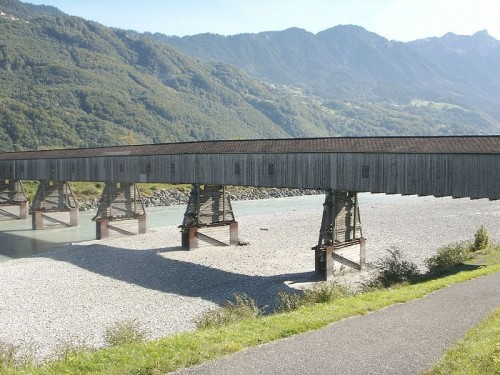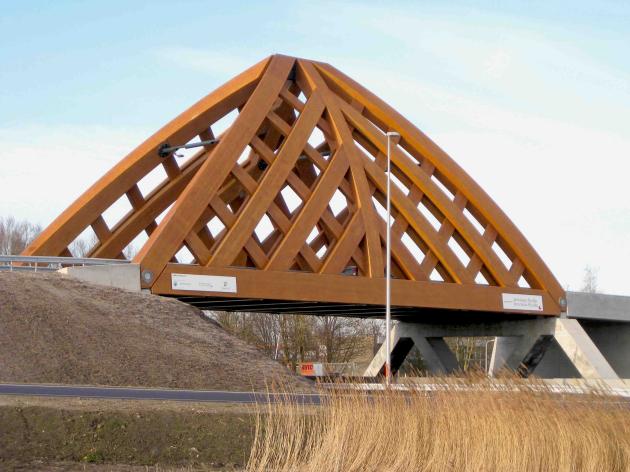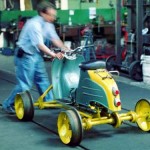This London pedestrian bridge is entirely manual, with a hand crank to open it for boat traffic. In the video, the architects also discuss how the haptic feedback provided by hand cranking allows issues to be identified and prevents damage. Thanks to Mathew Lippincott.
Stone Arch Bridges
“Stone arch bridges are amongst the strongest in the world. The technology has stood the test of time. The Romans built stone arch bridges and aqueducts with lime mortar more than twenty centuries ago. Arches and vaults were also the determining structural design element of churches and castles in the Middle Ages. There are stone arch bridges which have survived for hundreds and even thousands of years, and are still as strong today as when they were first constructed.”
“The main reason that western countries moved away from stone arch bridges is because of the high labour costs involved in their construction. In industrialised countries, it is cheaper to use pre-stressed concrete rather than employ a lot of masons and casual labourers. In the economic environment of East Africa and the majority of developing countries, stone arch bridges provide a more affordable and practical option.”
“A larger proportion of locally available resources are used in stone bridges as they can be built with local labour and stones. In contrast, raw materials and machines have to be imported for the construction of concrete bridges and specialized expertise is required. Compared to expensive aggregates, local stones are a strong, affordable material and they are often available in the vicinity (10-15 km) of the construction site. There is no need for expensive steel bars, aggregates, concrete or galvanised pipes that have to be hauled over long distances.”
Stone arch bridges, a strong and cost effective technology for rural roads. A practical manual for local governments, BTC Uganda & Practical Action.
Related:
Fences, Gates and Bridges
 “It is authoritatively stated that the building and maintenance of the farm fences in the United States have cost more than the construction of the farm buildings. Be this as it may, while large numbers of works have been written upon rural architecture we believe this is the first publication specially devoted to Fences, Gates and Bridges.
“It is authoritatively stated that the building and maintenance of the farm fences in the United States have cost more than the construction of the farm buildings. Be this as it may, while large numbers of works have been written upon rural architecture we believe this is the first publication specially devoted to Fences, Gates and Bridges.
It aims to be a practical work, showing the “evolution” of the fence from the road barrier of logs, brush or sods to the latest improved forms of barbed wire. The numerous illustrations are mainly representations of fences, gates, etc., in actual use. The chapter on fence law is necessarily condensed. The various judicial decisions upon the subject alone would fill a large volume. This little work, the first and only one of its character, is given to the public in the confident hope that it will prove specially useful to farmers and village residents.”
“Fences, gates, and bridges; a practical manual“, George A. Martin, 1892. Thanks to Rob McWilliam.
The Flying Men of Yungas Valley
“In Bolivia’s jungles and steep cliffs the Yungas people do not walk. They fly. On ropes. Like birds. Faster than astronauts. These ‘birds’ are known as cocaleros, or coca harvesters. They use ropes to swing across the narrow valleys, suspended from ancient rusting pulleys.” Watch the video. Jerry, thanks for the link. Previously: Aerial ropeways: automatic cargo transport for a bargain.
Covered Bridges: How to Build and Rebuild Them
“This manual is intended to provide comprehensive support to those involved with maintaining, assessing, strengthening, or rehabilitating covered bridges, especially heavy timber truss bridges. At one time, the United States reportedly had 14,000 of these unique bridges dotting the countryside over a surprisingly large area. Now, fewer than 900 of the historic structures survive.
Timber bridges initially were built without coverings and failed in just a few years because of rot and deterioration, because chemical wood preservatives were not available or used. Builders familiar with the construction of houses, barns, and large community structures naturally added siding and roofs to help protect the bridge. They understood that the covering would soon pay for itself.
They believed that regular maintenance and occasional replacement of the light covering was far easier and cheaper than building an entirely new bridge. North American covered bridges still serve after nearly 200 years, due in part to the continued soundness of the trusses, which was possible only with these protective coverings.”
“Covered Bridge Manual“, 327 pages, US Department of Transportation, 2005. Via Arquitectura y madera. Previously: wooden bridges / wooden pipelines. Picture by Rainer Ebert.
Wooden Bridges
This wooden bridge (length 32 metres, width 12 metres, height 16 metres) was inaugurated on April 15th in Sneek, the Netherlands. The “Krúsrak” is the first wooden bridge in the world that can support the heaviest load class of 60 tons. Its life expectancy is 80 years.
Thanks to a chemical treatment of the softwood, the bridge can withstand insects, fungi and the harsh weather conditions in the most northern province of the Netherlands (Friesland). Wooden bridges require much less energy to construct than steel or concrete bridges.
Only the road-surface of the “Krúsrak” is made of steel – originally it was planned to be of wood, too, but then it should have been 2 metres thick. More information here (in English) and here (in Dutch).
Related: Covered bridges – how to build and rebuild them. Also: wooden pipelines.








